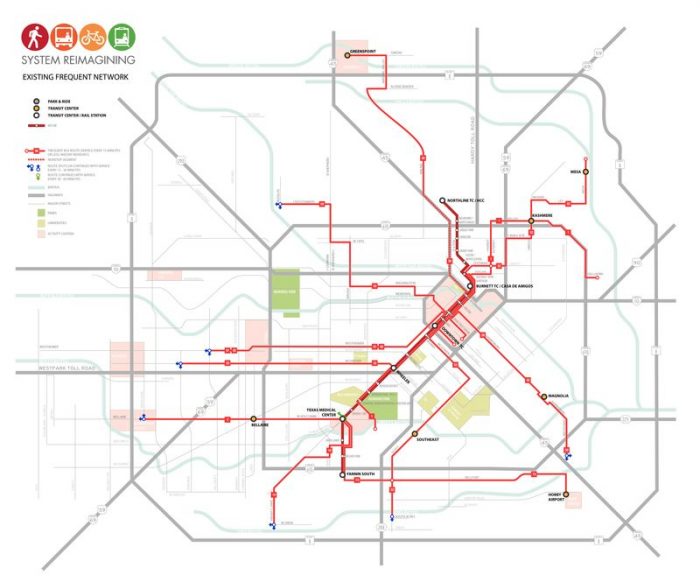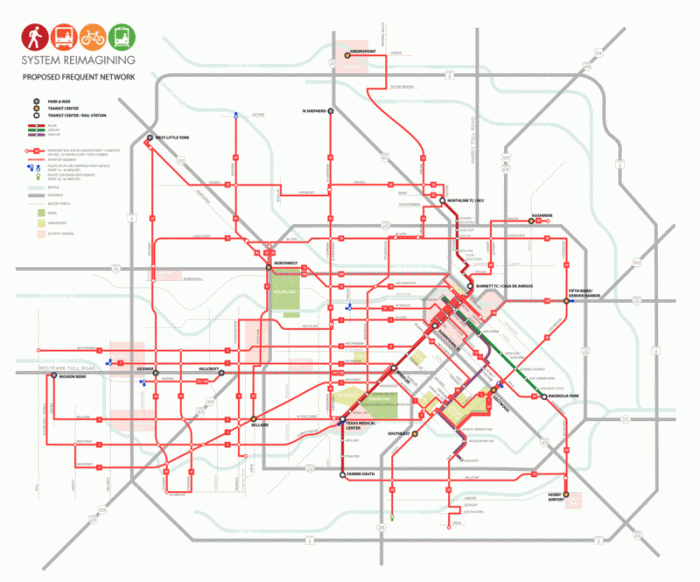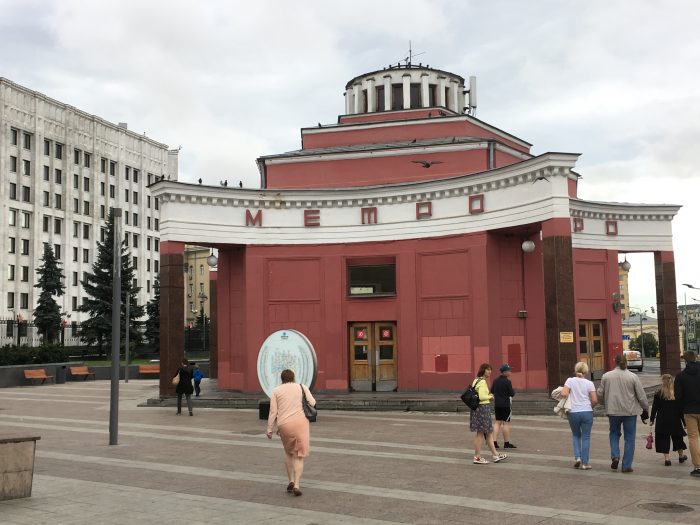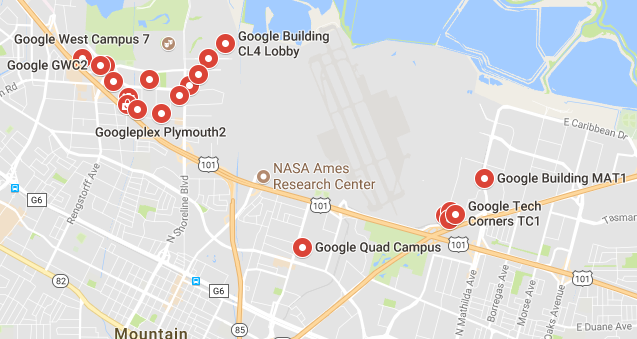It’s the topic of my piece in Citylab today.
Author Archive | Jarrett
Should I come to SXSW?
If you’re not a techie, SXSW is South by Southwest, one of the leading summits of the tech “disruptors,” held every year in  Austin.
Austin.
A proposed panel on New Mobility and the Future of Design would include:
- Gabe Klein, Founder of CityFi and former director of the Depts. of Transportation in Washington DC and Chicago.
- Jeff Wood, who runs the fine urban news outlet The Overhead Wire.
- Ben Holland, Sr Associate at Rocky Mountain Institute.
- … and me!
By the standards of tech conferences, this panel would be heavy on people with experience in transit agencies and government, which could be help counterbalance some of the prevailing instincts in the tech industry.
Anyway, there’s a place you can vote for this panel. It requires a login, which many of my tech-savvy readers already have. Feel free to state your view.
The Dangers of Elite Projection
(Leer en español aquí.)
Elite projection is the belief, among relatively fortunate and influential people, that what those people find convenient or attractive is good for the society as a whole. Once you learn to recognize this simple mistake, you see it everywhere. It is perhaps the single most comprehensive barrier to prosperous, just, and liberating cities.
This is not a call to bash elites. I am making no claim about the proper distribution of wealth and opportunity, or about anyone’s entitlement to influence. But I am pointing out a mistake that elites are constantly at risk of making. The mistake is to forget that elites are always a minority, and that planning a city or transport network around the preferences of a minority routinely yields an outcome that doesn’t work for the majority. Even the elite minority won’t like the result in the end.
Long ago, when I was presenting a proposed transit plan to the Board of Directors of a suburban transit agency in California, one board member — representing the wealthiest city in the area — leaned forward, cleared his throat, and said:
Now, Mister Walker. If we adopt this plan of yours, will that make me leave my BMW in the driveway?
The answer, of course, is no. But to suggest that this question is a valid test of a transit plan is an extreme example of elite projection. As a multi-millionaire, this man belongs to a tiny minority, so it makes no sense to design a transit system around his personal tastes. Successful transit is mass transit, and there is no mass to be achieved by pursuing him as a customer. Perhaps he could be attracted by a service to his door featuring on-board wine bar and massage service, but few other people would consider that good value for their more limited dollars. Let the for-profit sector give him that luxury, and ensure he pays for its impacts.
Now and then, of course, investment that benefits elites justifies itself as serving the common good. Expediting the lives of business executives, for example, will supposedly attract investment to your community. A specialized transit project will supposedly stimulate upscale housing development that will add to the tax base, even if you could never afford to live there. I am not seeking to open debate on those claims. To the extent that these arguments were right, elite projection would not be the right term. Most elite projection, however, makes no such claims. It’s simply an unconscious habit of assuming that your tastes are a good guide to what everyone will value.
In challenging elite projection, I am being utterly unreasonable. I am calling upon elites to meet a superhuman standard. Almost everyone refers to their own experience when discussing policy. Who doesn’t want their experience to be acknowledged? But in a society where elites have disproportionate power, the superhuman task of resisting elite projection must be their work. And since I’m one of these elites — not at all in wealth but certainly in education and other kinds of good fortune — it’s sometimes my work as well. Like all attempts to be better people, it’s utterly exhausting and we’ll never get it right. That means the critique of elite projection can’t just take the form of rage. It also has to be empathic and forgiving.
Still, elite projection is perhaps the primary barrier to the efficient, just, and liberating city. The city has this special feature: It functions for anyone only if it functions for almost everyone. You can say this about society in general, but only in the city is this fact so brutally obvious as to be unavoidable.
Traffic congestion, to take the obvious example, is the result of everyone’s choices in response to everyone’s situation. Even the elites are mostly stuck in it. No satisfying solution has been found to protect elites from this problem, and it’s not for want of trying. The only real solution to congestion is to solve it for everyone, and to do that you have to look at it from everyone’s perspective, not just from the fortunate perspective.
The ongoing disparagement of bus service in urban America has elite projection at its foundation. Large fixed-route buses are the only form of transit that can quickly scale to an entire city while using scarce urban space with extreme efficiency. Yet many urban elites assume (subtly or overtly) that bus service doesn’t matter because it’s not useful to them personally.
During my 25-year career I’ve watched fortunate urban leaders — mostly very well-intentioned — search endlessly for a transit idea that will allow them to neglect buses. One could point to some American streetcars-stuck-in-traffic, “redevelopment tools” which sometimes had no discernible transportation value There are the adorable ferries with tiny markets, and the overspecialized airport trains. Now, the same mistake powers the endless vague promises of tech disruption in transit, especially the mathematically absurd notion that transit that comes to your door when you call it will scale to the entire population of a dense city. (Serious experts have largely abandoned this claim, but it is out there in the discourse, undermining support for transit that actually works.)
None of these ideas made any geometric sense as a way to liberate everyone in a dense city, but they appealed to elite tastes, dazzled public attention, and therefore helped to defer investment in the transit that vast numbers of urban people would find useful and liberating. This neglect causes transit to deteriorate, yielding outcomes that further justify the neglect.
Again, we can’t challenge elite projection in others until we forgive it in ourselves. Almost everyone reading this is part of some kind of elite. But the more powerful you are, the more urgent this work is. We must all ask ourselves: “Would this idea work for me if I were in a typical citizen’s situation, instead of my fortunate situation?” Because if not, it won’t work for the city, and in the end that means it won’t even work for you.
Can You Tour a Bus Network Redesign?
In my email today:
I am visiting Houston in a couple of weeks. … I was wondering: are there any particular routes that would be interesting to ride as an example?
Yes, I led the design process for the new Houston bus network, implemented in August 2015. Buses now run in simpler, straighter, more useful paths, and often at much higher frequencies. People can get to more places more quickly than ever before. The high-frequency network went from this …
to this …
But I don’t know how I would direct a tourist to experience this — the way it’s so easy to tour a piece of transit technology. You can ride one of the redesigned bus routes, but you won’t notice it’s redesigned unless you try to travel through the system for many purposes. You can ride a cool bus, and take pictures of it, but then you’ve toured another piece of technology, not the network.
You’d have to live in the city, and use the bus to go lots of places, in order to experience the thing that we designed, which is the sheer ease of getting to many places more quickly.
At best, you could tour information and wayfinding systems. If you stand at a bus stop, how obvious is the network and its usefulness? This is a kind of tourism that I encourage, and that I always engage in. But the wayfinding is not the network. Many transit networks are much better than you’d guess from their public information, signage, etc.
Here is yet another example of why cities often look at improving their bus networks only after they’ve tried everything else. There’s nothing to tour, nothing a visitor can see in an hour that would give them a sense of it.
I’m curious if anyone else has encountered ways to make bus network redesign an object of tourism. Because among urbanist opinion leaders, tourism is a huge part of how ideas are transmitted, and valued.
Video of My Talk in Moscow
 In the context of the Moscow Urban Forum, I did a well-attended public lecture at the Strelka Institute, a prestigious center for urban policy and design. The video is here. I start talking (in English) around 6:08. (Click “Not now” if your credentials are challenged.)
In the context of the Moscow Urban Forum, I did a well-attended public lecture at the Strelka Institute, a prestigious center for urban policy and design. The video is here. I start talking (in English) around 6:08. (Click “Not now” if your credentials are challenged.)
Unfortunately, nobody told me that the event would be outdoors, so I was not quite dressed for the occasion; this explains the blanket and deeply unfashionable hat. I am one of those old-fashioned people who refuses to freeze for the sake of style.
The Pleasure of Riding Failing Transit
The New York Times has a great parable about the largely empty ferries plying the Hudson River, and the massively crowded trains that the money could have been spent on. I was reminded of Leap, the failed elite bus in San Francisco, whose marketing images always emphasized how you have room to spread out. Here was one of their videos:
Note that the bus in this video is never more than half full.
Images that sell you a transit service by emphasizing how empty it is are advertising either (a) an failing service or (b) a service targeted at elites, one that should have very high fares. The few passengers on the bus must pay for transporting the empty seats all around them.
And not many people are actually willing to pay that. So instead they are subsidized, either by taxpayers (US $95 per customer round trip in the case of the ferry) or by venture capital, which sooner or later runs out.
But the goal of this marketing, as always, is to encourage elites to mistake what is nice for them with what works for the city. Because when public transit is really working effective to foster a functional city, you can’t expect to be surrounded by empty seats.
Moscow: Speaking at Strelka Institute
I’m in Moscow again, following up on our work a year ago that redesigned the bus network in the core of the city. Thursday night, 6 July, I’ll be speaking at the Strelka Institute, a prestigious institution focused on the issues facing Russian cities. I’ll speak in English with simultaneous translation into Russian. Details here!
Can We Live without Prediction? The Video
For the Congress for the New Urbanism conference in Seattle last month, I tried out a new angle on my usual stump speech. I asked: Can we live without predictions? What would it mean to approach a city planning problem — say, transit planning, which I do — without needing to know the future?
I’m pretty happy with how it came out. It’s embedded below, but it seems to be slightly sharper here.
Google’s “Grand Central of the West”
Google and Apple continue to be a story of contrasts, and their latest development moves are no exception. As Apple completes a new inward-looking space-age fortress in a largely transit-hostile location, Google is planning a huge campus right at Diridon station on the west edge of downtown San Jose, with up to 20,000 employees.
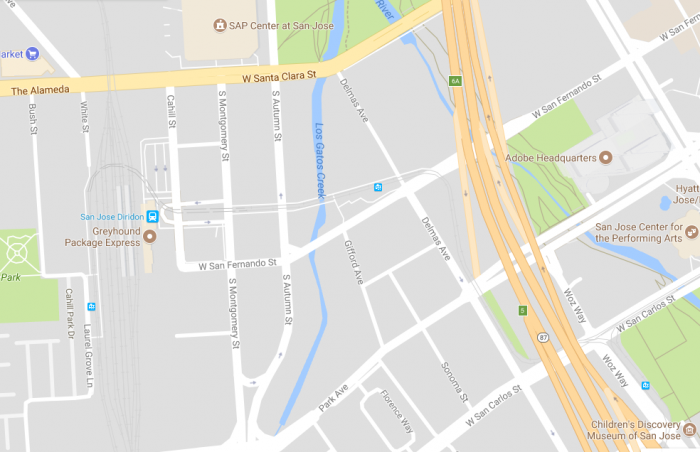
Google has its eye on the middle of this area in downtown San Jose, California. Note Diridon Stn on the left, LRT line running through, and existing fine street grid. Most of downtown San Jose is just off the map to the right. Lots of frequent bus service too!
Under current plans, Diridon station will eventually have frequent rapid transit up both sides of the bay (Caltrain on the west to San Francisco, BART on the east side to Oakland and Berkeley). It’s also a major hub in the local transit network (which we take pride in helping to design). It is clearly on its way to being the most transit-accessible location in the southern half of the Bay Area.
Google’s current Silicon Valley situation is, frankly, a mess.
The company occupies a collection of office parks gathered around various sides of the obstacle of Moffett Field, a military and NASA installation. This obstacle creates a chokepoint where east-west traffic is all forced down to the 101 freeway, increasing congestion there. So traveling between Google sites, even over a distance of a mile or two, can be a pain, regardless of whether you drive or take a Google shuttle.
Google’s current locations on the north edge of the valley also form part of the Great Silicon Valley Jobs-Housing Imbalance — jobs are mostly in the north and residents in the south — which creates unmanageable south-north congestion. And of course Google must also run a huge fleet of buses to bring staff from San Francisco, where many of them want to live.
Many newer startups — like Twitter, Uber, Lyft, Salesforce — have decided that to attract urban talent they have to move into San Francisco — great for transit and walkability, great for their top talent who live there, not so great for lower level employees who can’t afford to live within 20 miles of their job in one of the most expensive cities in the world.
Meanwhile, San Jose has just been sitting there, right adjacent to Silicon Valley, with a historic downtown that has great bones but could use more investment. Inner San Jose is a pleasant, walkable, historic city that non-elite techies can afford to live in, and that still offers good transit access to the rest of the Bay Area. Adobe, to its credit, is already there.
So bravo. I hope this is opens the floodgates to more employers relocating in the most transit-oriented place in Silicon Valley.
Dublin: Video of My Presentation
While I was last in Dublin to kick off our Bus Network Redesign study, I was invited to give an evening lecture at Engineers Ireland. Here’s the video. I start talking at 4:06. The questions were excellent.
